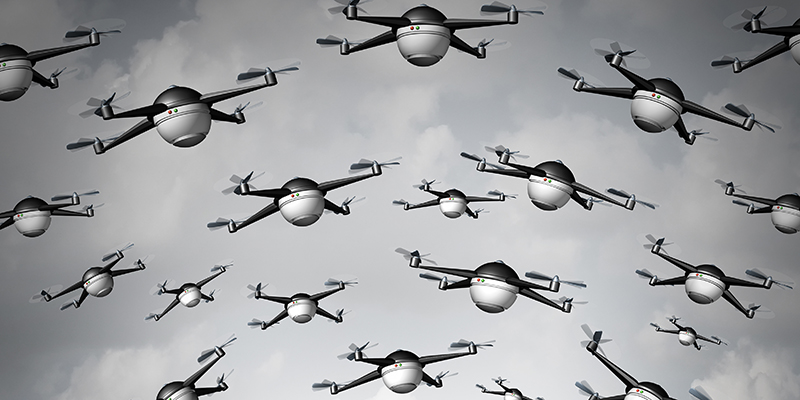Strategic approach – Reducing risk of rogue drones

The proliferation of the commercial use of drones has created a new, innovative and exciting addition to the aviation industry with boundless possibilities. Inevitably, this disruptive cutting-edge technology comes with risks. Careless and inconsiderate drone users can cause a nuisance and pose a safety risk to others.
Ignorance of drone pilots is not an excuse, but the inconsiderate and reckless use of drones raises concerns for the privacy of citizens and public safety. There are also those who are deliberately using drones for criminal acts, to facilitate organised crime, to disrupt national infrastructure and to commit acts of terrorism.
Major incidents involving the malicious use of drones has highlighted that tackling hostile drone threats is a clear and present danger. Governments across the world are now seeking ways to reduce the likelihood of such incidents, as well as amplifying their ability to respond should further rogue drone incidents occur.
It is clear that the scale of the challenge in preventing hostile drone incursions and malevolent attacks requires the wider co-operation of beyond any single government department – cross-government multiagency collaboration is now considered essential to counter rogue drone threats. There is also growing international consensus that no single technological silver bullet suitable for use against all rogue drone threat vectors is currently available and, as drone technology advances, the nature of the threat will continue to change, amplifying the challenge of countering hostile drone threats.
Tackling malicious drone use therefore now requires a comprehensive and layered strategic approach to be put in place by governments and implemented across the full local, regional and national apparatus of the state. This strategic approach must blend technological innovation with advancements in unmanned aerial vehicle (UAV) legislation, regulation and education.
Neither will developing counter-drone solutions solely reside in one nation; it is a global, cross-border phenomenon, requiring greater sharing of knowledge, expertise and best practices. It is also a problem that cannot be solved by state authorities alone; at-risk sectors within private industry must proactively consider their vulnerability to malicious drone use, as well as how they should mitigate it safely and within legal and ethical frameworks. Technological countermeasures will need to co-evolve with the continued proliferation of drones, and within the legal and regulatory frameworks that govern their use.
Some governments have already recognised the scale of threats from contemporary drones, developing a comprehensive understanding of the evolving risks posed by their malicious and illegal use. This recognition is now turning into positive state action, taking a ‘full spectrum’ approach to deter, detect and disrupt the misuse of drones, which acknowledges the need to build strong relationships with industry to ensure their products and services meet the highest security standards throughout the design and development phases.
Recognising the threats from all manner of drones, governments need to strike the delicate balance between ensuring a robust security posture is in operation to keep citizens, their property and their data safe, while allowing the many societal, economic and environmental positive benefits of the adoption of drones to thrive.
Andrew Staniforth is Director of Innovation, Saher (Europe) and a Member of CRJ's Advisory Panel. Learn more about his new book: Counter Drone Strategies
Andrew Staniforth, 10/02/2021